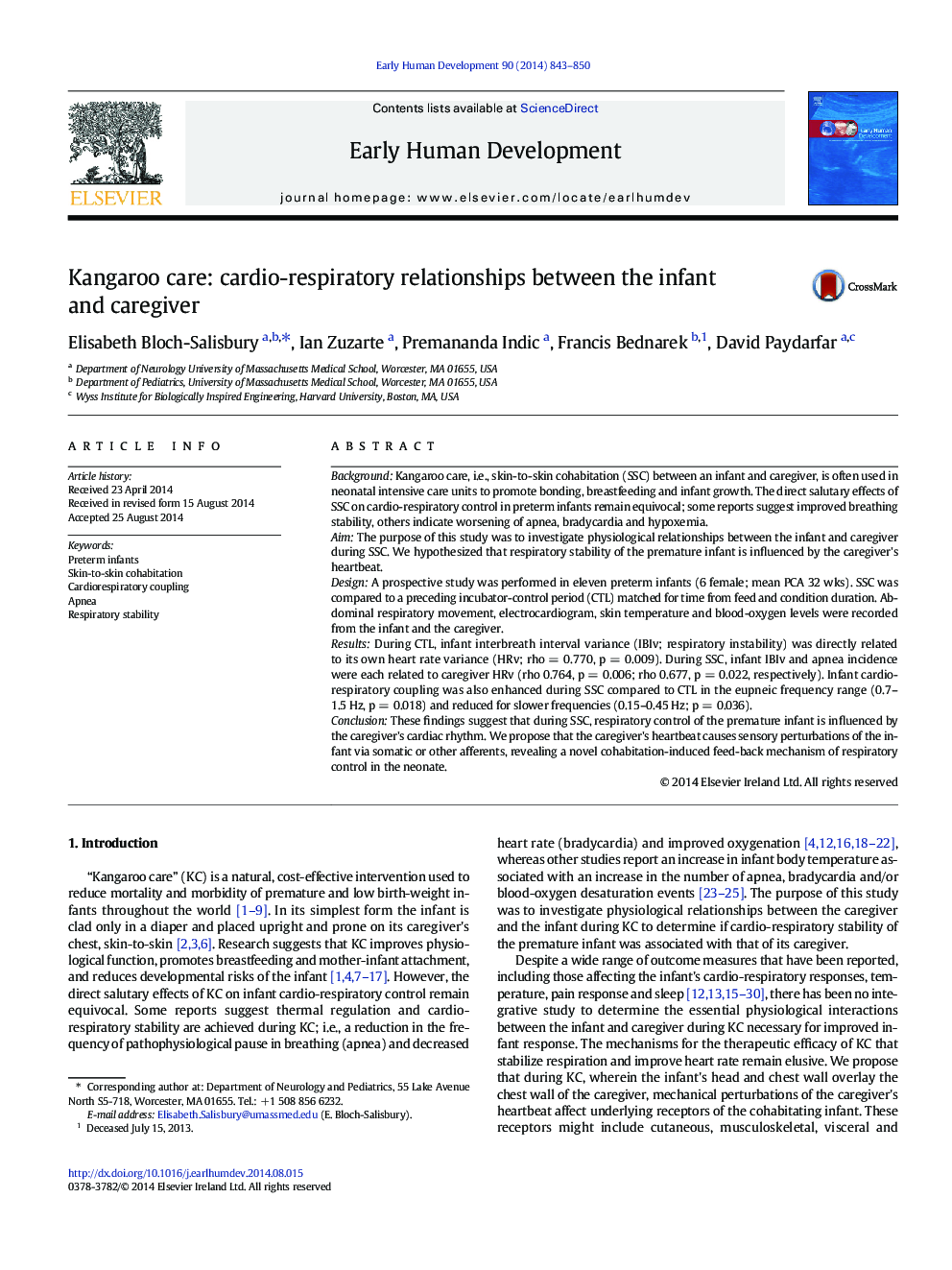| کد مقاله | کد نشریه | سال انتشار | مقاله انگلیسی | نسخه تمام متن |
|---|---|---|---|---|
| 6171819 | 1599475 | 2014 | 8 صفحه PDF | دانلود رایگان |
BackgroundKangaroo care, i.e., skin-to-skin cohabitation (SSC) between an infant and caregiver, is often used in neonatal intensive care units to promote bonding, breastfeeding and infant growth. The direct salutary effects of SSC on cardio-respiratory control in preterm infants remain equivocal; some reports suggest improved breathing stability, others indicate worsening of apnea, bradycardia and hypoxemia.AimThe purpose of this study was to investigate physiological relationships between the infant and caregiver during SSC. We hypothesized that respiratory stability of the premature infant is influenced by the caregiver's heartbeat.DesignA prospective study was performed in eleven preterm infants (6 female; mean PCA 32 wks). SSC was compared to a preceding incubator-control period (CTL) matched for time from feed and condition duration. Abdominal respiratory movement, electrocardiogram, skin temperature and blood-oxygen levels were recorded from the infant and the caregiver.ResultsDuring CTL, infant interbreath interval variance (IBIv; respiratory instability) was directly related to its own heart rate variance (HRv; rho = 0.770, p = 0.009). During SSC, infant IBIv and apnea incidence were each related to caregiver HRv (rho 0.764, p = 0.006; rho 0.677, p = 0.022, respectively). Infant cardio-respiratory coupling was also enhanced during SSC compared to CTL in the eupneic frequency range (0.7-1.5 Hz, p = 0.018) and reduced for slower frequencies (0.15-0.45 Hz; p = 0.036).ConclusionThese findings suggest that during SSC, respiratory control of the premature infant is influenced by the caregiver's cardiac rhythm. We propose that the caregiver's heartbeat causes sensory perturbations of the infant via somatic or other afferents, revealing a novel cohabitation-induced feed-back mechanism of respiratory control in the neonate.
Journal: Early Human Development - Volume 90, Issue 12, December 2014, Pages 843-850
